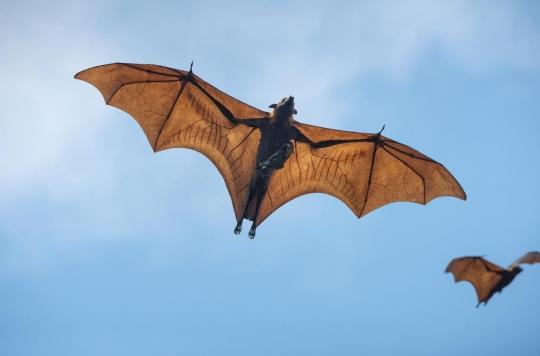SARS, MERS, Ebola… These different viral epidemics have one thing in common: they come from bats. American researchers believe that this animal has a highly developed immune system, promoting the replication of viruses.

The balance sheet of the Chinese coronavirus, Covid-19, soared on Thursday February 13: 242 additional deaths were recorded and 14,840 new cases of contamination detected. A record leap following a new counting method now applied. A total of 1,369 people have died from the coronavirus worldwide. The bat is suspected to be the cause of this epidemic, which has been raging since December. This animal was also the source of severe epidemics in recent years: SARS, MERS, Ebola and Marburg. According to researchers from theuniversity of california in Berkeley (United States), the bat has a highly developed immune system, which is favorable to the replication of viruses. When the disease is transmitted to a living being whose system is less strong — such as a human being, for example — the virus then wreaks fatal havoc. Their study is published in the journal eLife.
No inflammation in bats
The bat is the only mammal capable of flight. In the air, she manages to make her metabolism twice as efficient as that of a running rodent. In general, intense physical activity and a high metabolism lead to tissue breakdown, due to the accumulation of reactive molecules, such as free radicals. However, the bat seems to be able to suppress these molecules. “Some bats not only have the ability to mount this robust immune response but also have an anti-inflammatory reactionExplain Cara Brooklead author of the study. If our body attempted the same strategy, our immune system would trigger widespread inflammation. Bats seem to be the only ones that can avoid the threat of immune disease.“
The infection is slowed down…
In addition, in bats, the immune system releases signaling molecules, called alpha interferons. Their role is to tell other cells to prepare to fight before a virus arrives. To analyze the influence of this immune response on the evolution of the virus, the researchers used cultured bat cells (Egyptian fruit bat and Australian black bat) and monkey cells. The cells of these three species have been infected in the laboratory with the Ebola virus and the Marburg virus. Result: the cells of the monkey were quickly overtaken by the viruses and were killed. Some cells in the Egyptian fruit bat were able to shed the virus through interferon signals, but in the Australian black bat, infection was slowed. The researchers also observed a longer persistence of the virus in the animal’s body.
… and the virus stays longer
“You have to see the viruses on a cell like a fire that ravages a forest. Some populations (cells) have security blankets and the fire passes over them without hurting them, but it still leaves soot deposits. These are viral cells that are still there”, detail the authors of the study. Thus, the surviving cells will reproduce, and the new cells will become new targets for viruses. In this way, the infection is longer in the body. “This would mean that having a very robust interferon system would allow viruses to stay longer in their reservoir. With a high immune response, you get cells that are protected from infection and the virus can replicate without causing damage in the body of the host. Then, when it spreads to someone else, the antiviral mechanism is no longer the same, and the pathology declares itself..” This is how we can explain the mortality in humans.
Study animal habitat
The authors of the study now want to analyze the trajectory of viruses, from animal to animal, in an attempt to predict their emergence. Their habitat is also important. Researchers have in fact found that when that of bats is disturbed, they have a stress reaction and spread even more virus in their saliva, urine and droppings. This is where other animals can become infected and then transmit the disease to humans.
.
















